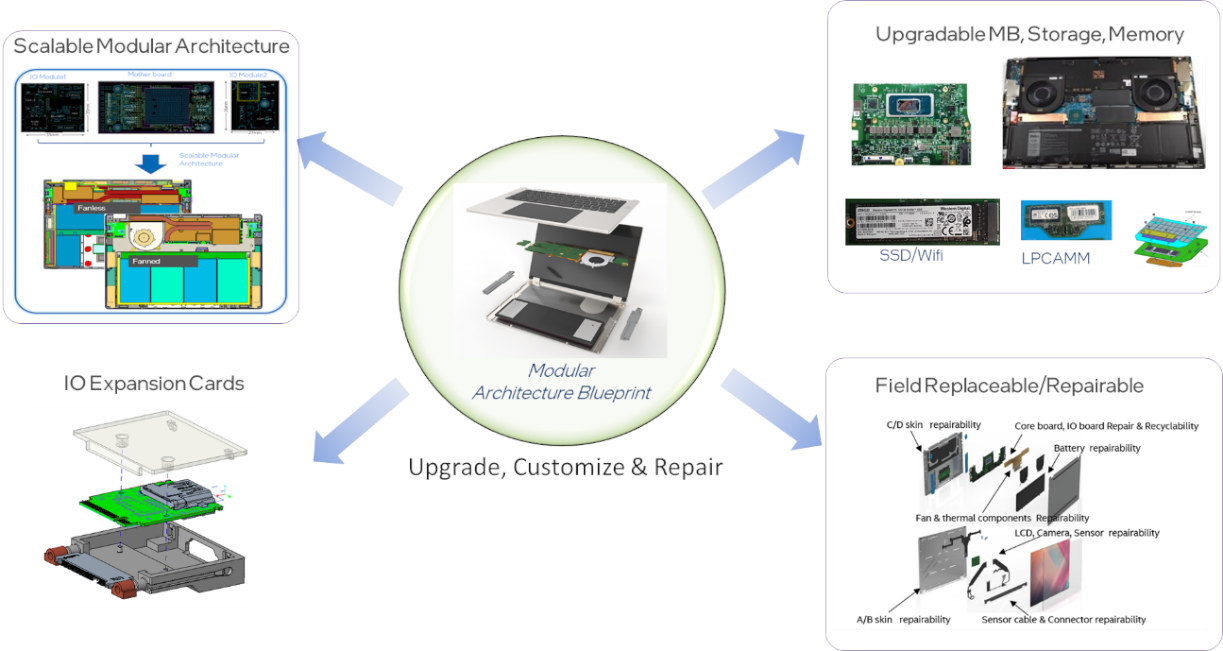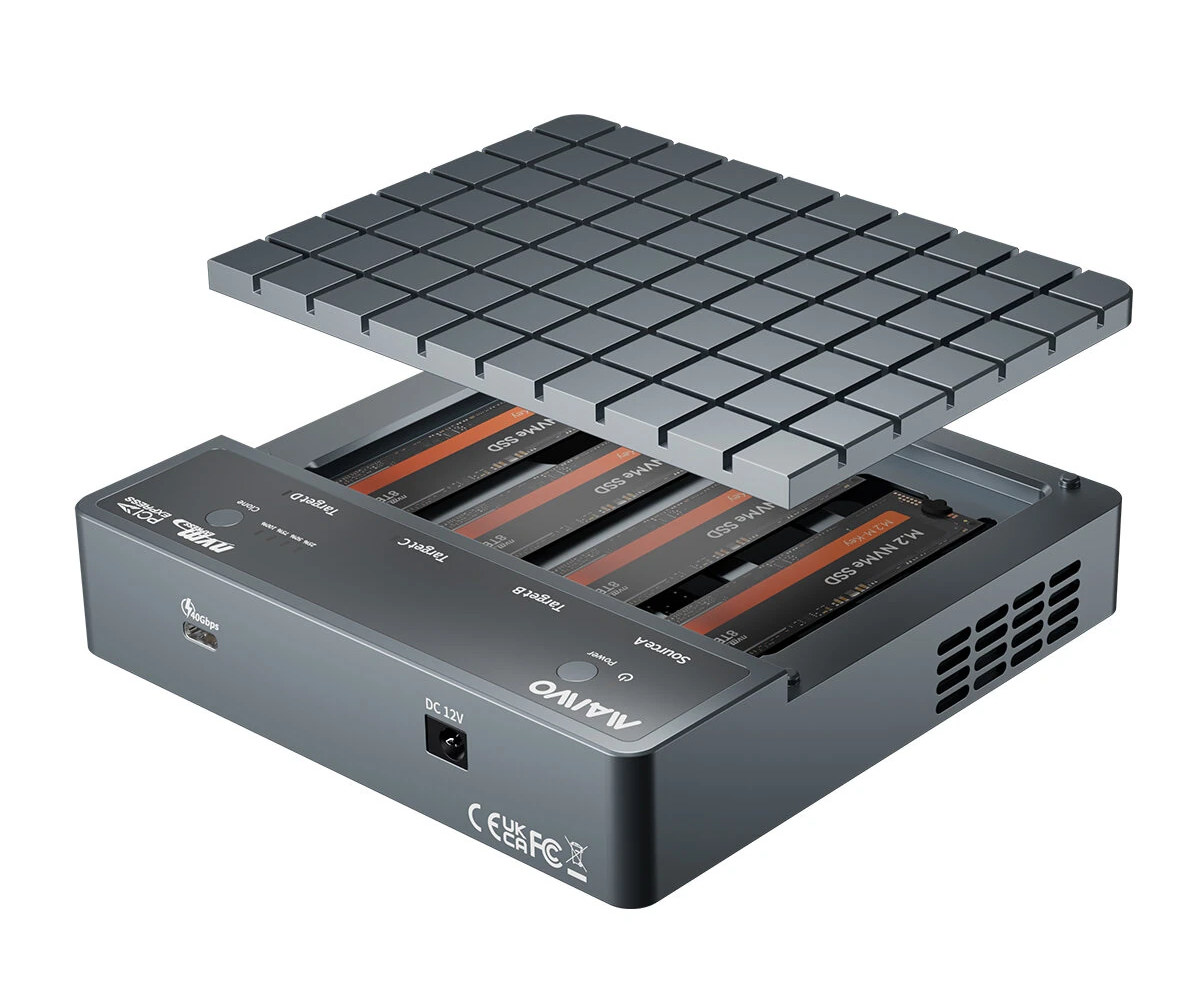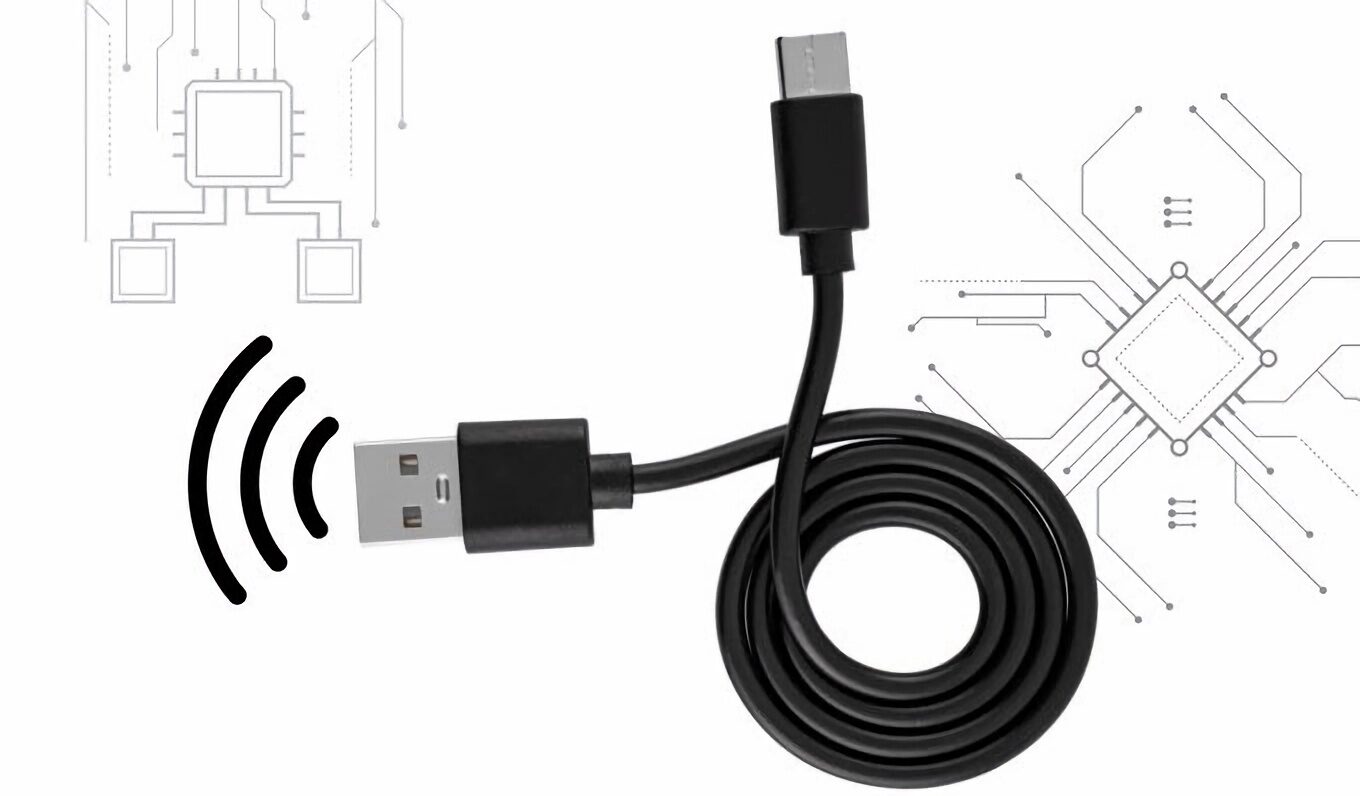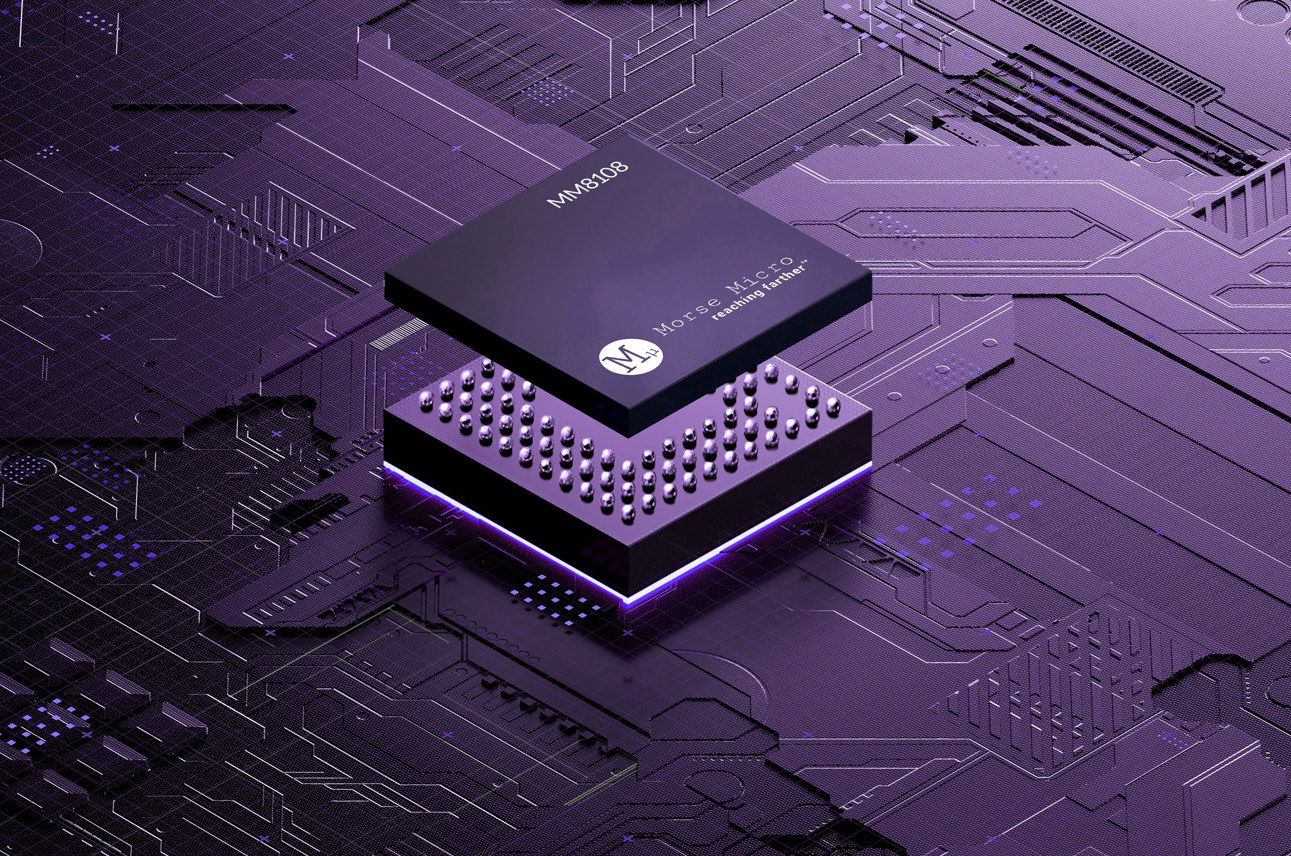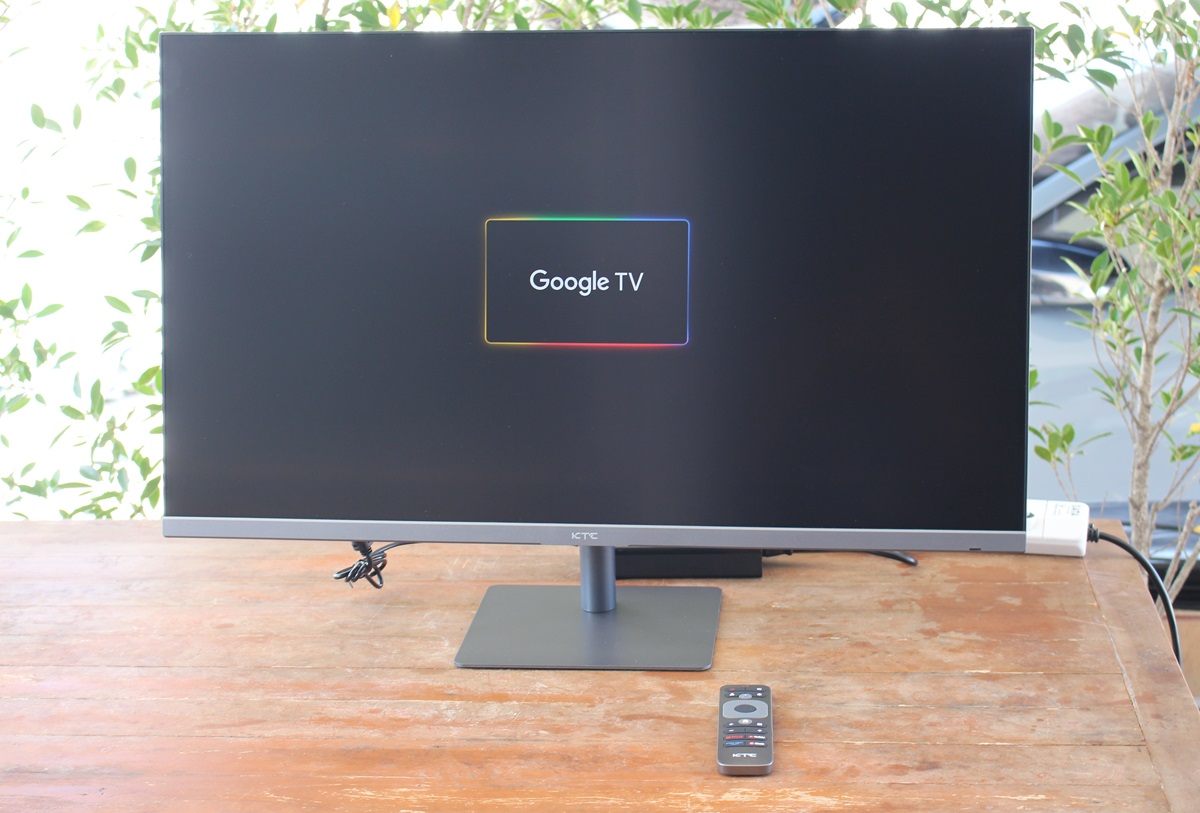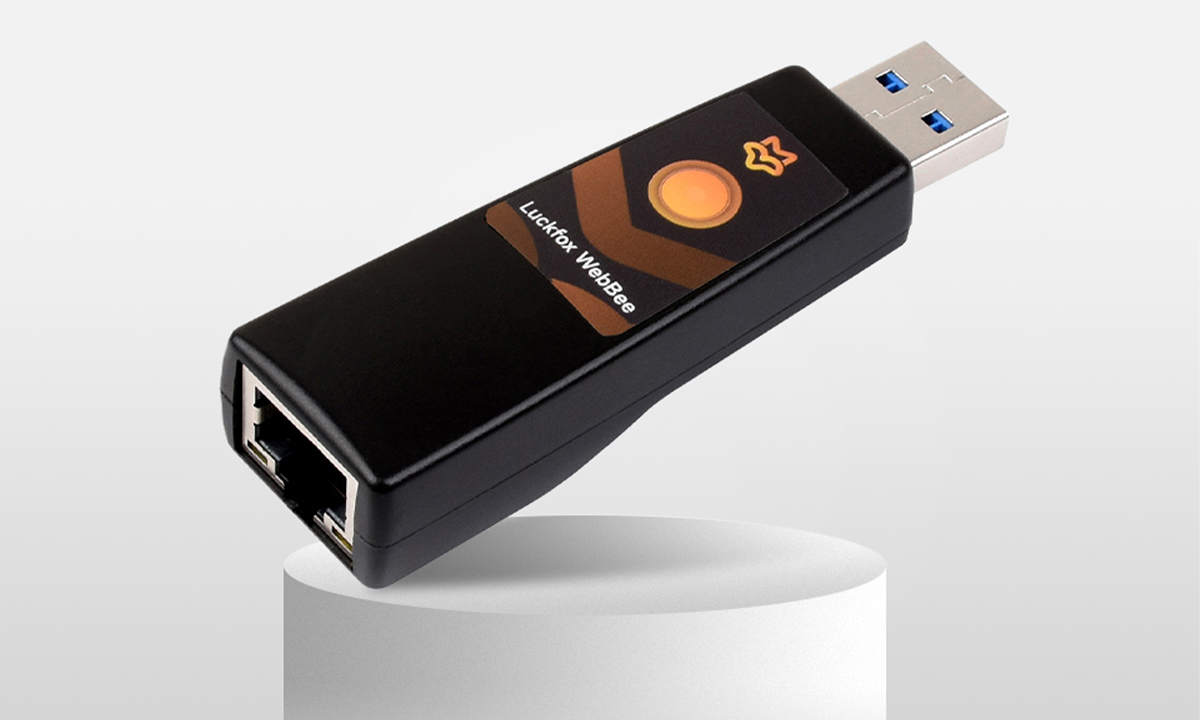Intel has published an article proposing a modular PC design that would improve the repairability/right-to-repair of laptops and mini PCs and reduce e-waste through the replacement of motherboard, display, and M.2 or FPC add-on modules for the user-facing ports. Making repairable, modular electronic devices is not a new idea, and the Framework laptops are probably the best-known option now, but they do come at a premium. But most projects are limited success, for instance, Project Ara modular smartphone from Google eventually died off. We’ve also covered modular or open-source hardware solutions from smaller companies over the years such as Firefly Station P3D modular Arm mini PC with swappable cards, or Olimex Teres-I DIY and open-source hardware laptop. It’s good news that a large company like Intel is taking the repairable, modular PC topic seriously, but as we’ll see below it’s currently a high-level proposal with few technical details. Most laptops […]
MAIWO K2024 USB4 M.2 enclosure takes up to four M.2 NVMe SSD, serves as a 1-to-3 SSD duplicator
There are many M.2 USB4 or Thunderbolt enclosures on the market, but the MAIWO K2024 USB4 enclosure is a little different as it takes up to four M.2 NVMe 2230 to 2280 SSDs and features a button to use the device as 1-to-3 SSD duplicator. Based on the ASMedia ASM2464PDX USB4 controller, the MAIWO K2024 is suitable for people needing lots of NVMe SSD storage with high-performance random I/Os, for instance for video editing, and users needing to duplicate SSDs quickly and easily, e.g. to duplicate a Raspberry Pi OS installation on several SSDs. MAIWO K2024 key features: Chipset – ASMedia ASM2464PDX USB4/Thunderbolt 3 to PCIe/NVMe controller with USB 3.2 and USB 2.0 backward compatibility Storage Up to 4x M.2 NVMe M-Key SSDs 2230/2242/2260/2280 sizes supported Up to 32TB storage when using 4x 8TB SSDs Transfer rate of 16 Gbps with one SSD (PCIe Gen4 x1), 10 Gbps each with […]
HackCable is a wireless-enabled, USB-C keystroke injection cable powered by ESP32 or RP2040 (Crowdfunding)
HackCable is a wireless-enabled USB-C keystroke injection cable described as the “ultimate tool for cybersecurity enthusiasts and ethical hackers.” powered by the ESP32-S3 or the Raspberry Pi RP2040. The ESP32-S3 version is described as the Wi-Fi Version and offers a built-in Wi-Fi hotspot, remote operation, and master-slave configuration for multiple cables. The Normal Version is a cheaper variant powered by the Raspberry Pi RP2040 microcontroller and built for focused, offline tasks where wireless control isn’t needed. The HackCable promises hardware keylogging, remote control, and master-slave synchronization for multiple cables. We have covered other USB penetration testing tools like the Diabolic Drive and Pendrive S3, but those were USB dongles while the HackCable looks like a standard USB Type-A to USB Type-C cable. There is very little information about the product, other than the microcontrollers that power it. It is likely running SuperWiFiDuck or some other USB rubber ducky program. It […]
USB-C and Lightning tester features an LCD display showing the voltage of each pin
VBEST’s Tail Insert Detector is a USB-C and Lightning cable/device tester that reports “real-time” current and voltage of each pin on its built-in display for easy debugging and testing. VBEST Tail Insert Detector highlights and specifications: Port compatibility – USB Type-C male and Lightning male ports Display – Color LCD display Features – Real-time current and voltage detection Misc – Push switch for power and display mode Power 5V via USB-C female port (on the side) Built-in battery Dimensions – 52 x 35 (estimated) x 14mm Sadly, there’s not much in the way of documentation, so it’s unclear how many display modes there are. I’m also confused by the “real-time” voltage and current reporting, because we’re also told it takes 5 seconds to detect “abnormal pins”. The VBEST’s device is very similar to the A2C caberQU and C2C caberQU boards used to respectively test USB-A to USB-C and USB-C to […]
Morse Micro MM8108 WiFi HaLow SoC supports up to 43.33 Mbps transfer rate, improves range and power efficiency
Morse Micro MM8108 is a new WiFi HaLow (802.11ah) SoC with a throughput of up to 43.33 Mbps, and improved range and power efficiency compared to its predecessor the Morse Micro MM6108 introduced in 2022 and supporting up to 32.3 Mbps transfer rate. The new chip is also smaller at just 5x5mm in a BGA package instead of 6x6mm in a QFN48 package for the MM6108/MM6104, adds a USB 2.0 host interface besides SDIO 2.0 and SPI, as well as a MIPI RFFE (Radio Frequency Front-End) for integration and interoperability with multi-radio systems. Morse Micro MM8108 specifications: 32-bit RISC-V Host Applications Processor (HAP) Single-Chip IEEE802.11ah Wi-Fi HaLow transceiver for low-power, long-reach IoT applications Worldwide Sub-1 GHz frequency bands (850MHz to 950MHz) On-chip 26 dBm power amplifier with support for external FEM (Front End Module) option 1/2/4/8 MHz channel bandwidth for up to 43.3 Mbps data rate using 256-QAM modulation at […]
KTC A32Q8 Review – A 32-inch 4K Smart Monitor running Google TV
KTC A32Q8 is a 32-inch 4K UHD monitor running Google TV and supporting up to 3840×2160 resolution with a refresh rate of 60Hz. The monitor takes HDMI 2.1, Display1.4, or USB-C video input, comes with two 5W speakers, supports Dolby Audio and HDR, and offers WiFi and Bluetooth connectivity as well as USB 2.0 ports. A voice remote control is also included for Google TV control and configuration. In this review, we will look at the specifications, go through an unboxing, and test the various features of the KTC A32Q8 Smart Monitor. KTC A32Q8 Smart Monitor specifications Screen Size – 31.5-inch Resolution – 3840×2160 (Ultra HD) Visible area – 697 x 392 mm Panel Type – VA (Vertical Alignment) Aspect Ratio – 16:9 (Widescreen) Refresh Rate – 60Hz Response Time (GtG) – Not specified Brightness 250 cd/m² Brightness (HDR) 250 cd/m² Contrast Ratio 3000:1 (static) Colors 1.07 billion (8-bit + […]
PicoPD Pro – An open-source RP2040 development board with USB PD support up to 30V
The PicoPD Pro is an open-source Raspberry Pi RP2040 development board that integrates USB PD support up to 30V, and features like voltage negotiation and power delivery while still retaining the Raspberry Pi Pico functionality. It features the AP33772S USB-C PD3.1 sink controller from Diodes Incorporated. The AP33772S supports the full USB-C PD 3.1 specification, including Extended Power Range (EPR) / Adjustable Voltage Supply (AVS) up to 28V and Programmable Power Supply (PPS) up to 21V. The PicoPD Pro USB PPS/AVS development board is ideal for powering devices with specific requirements, such as motor control boards, LED drivers, custom battery chargers, and other high-power applications. It also features a 5V rail output for less demanding applications. It can also be used as an AP33772S evaluation board. We have previously seen other USB-C PD solutions like the Spark Analyzer, YULC LED Controller, and USB Insight Hub which may serve a similar […]
Luckfox Pico WebBee – A Rockchip RV1103 USB & Ethernet development board for web servers, scripting, and Smart Home applications
Luckfox has launched the Pico WebBee, a Linux-based micro development board powered by the Rockchip RV1103 Cortex-A7 SoC with 64MB of on-chip RAM. Externally, the Pico WebBee resembles a USB dongle enclosed in an ABS case with a USB Type-A port and a 100Mbps Ethernet RJ45 port. Additionally, it includes an internal microSD card slot and a boot button. The board is designed for applications such as lightweight web servers, USB scripting tools, and smart home devices. It’s not quite the first Rockchip RV1103 solution from Luckfox, as we previously covered the Luckfox Pico Mini Arm Linux camera board and the Luckfox Pico Plus camera board with an Ethernet port. The Pico WebBeee is quite different in its form factor (it’s a complete device), and it also lacks a camera interface. Luckfox Pico WebBee specifications: SoC – Rockchip RV1103 G1 CPU – Single-core Arm Cortex-A7 processor @ 1.2GHz + RISC-V […]


